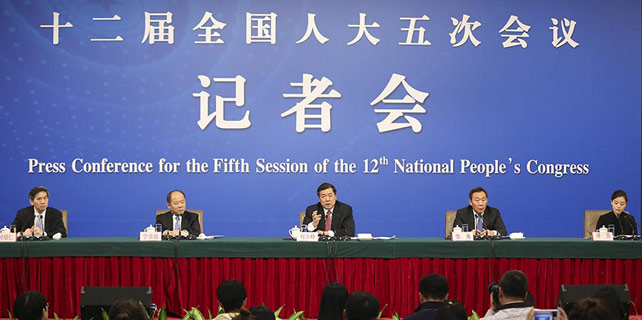China to develop satellite-delivery rockets released from airplanes
China will develop a new generation of rockets launched from aircraft that can put satellites into space, according to Li Tongyu, the head of carrier rocket development at the China Academy of Launch Vehicle Technology.
Air-launched rockets can rapidly replace dysfunctional satellites or, in cases of disaster relief, quickly send up Earth observation satellites to assist in the effort, Li said.
Designers at the academy, which is the main developer of Chinese carrier rockets, have designed a model capable of sending a payload of about 100 kilograms into low Earth orbit and are ready to produce one if the government asks, he said. They plan to design a larger rocket that could carry 200 kg into orbit.
"The Y-20 strategic transport plane will be the carrier of these rockets. The jet will hold a rocket within its fuselage and release it at a certain altitude. The rocket will be ignited after it leaves the plane," Li said.
Large satellites will still have to be put into orbit with conventional rockets, experts said.
Delivery of the Y-20 to the Chinese Air Force began in July. It is China's first domestically developed heavy-lift transport plane and has a maximum takeoff weight of more than 200 metric tons and a maximum payload of about 66 tons, aviation experts said.
Solid-fuel rockets can be launched from planes much faster than land-based, liquid-fueled rockets, where preparation can take days, weeks or longer, in part because it takes so much time to pump in the fuel, experts said.
Each mission involving a solid-fuel rocket launched by a Y-20 would take only 12 hours of preparation to place a 200 kg satellite into a sun-synchronous orbit 700 km above Earth, according to estimates by Long Lehao, an academician of the Chinese Academy of Engineering, and other researchers at the China Academy of Launch Vehicle Technology. The estimates were in an article published in October in the Journal of Deep-Space Exploration.
Other advantages of such rockets are that they are flexible in deployment and use and do not need ground infrastructure, said Pang Zhihao, executive editor-in-chief of Space International magazine. They also are less susceptible to bad weather and launch costs are lower than those of ground-launched rockets, he added.
The United States undertook the world's first air-launched space mission in 1990, in which a Pegasus rocket developed by the former Orbital Sciences Corp was launched from a refitted B-52 strategic bomber to send two small satellites into orbit. Since then, 43 Pegasus missions have been carried out, with the most recent in December.
Several US space companies, including Virgin Galactic and Generation Orbit Launch Services, are developing air-launched rockets.
Chinese designers have been quietly working on the concept for years. China Aerospace Science and Technology Corp, parent of Li's academy, displayed a scale model of a winged, solid-propellant, air-launched rocket in 2006 at the Sixth China International Aviation and Aerospace Exhibition in Zhuhai, Guangdong province.
zhaolei@chinadaily.com.cn
(China Daily USA 03/07/2017 page1)












